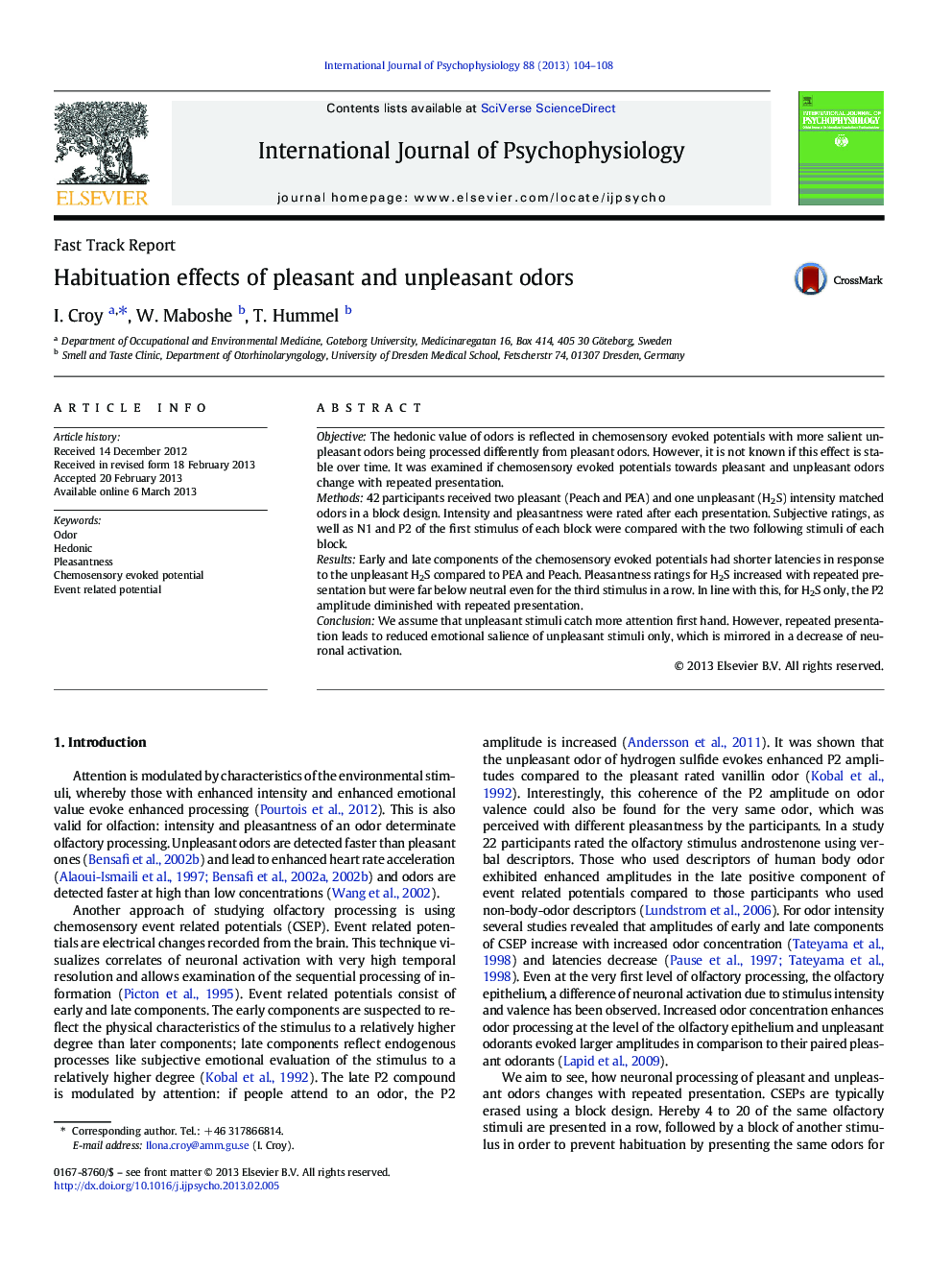| کد مقاله | کد نشریه | سال انتشار | مقاله انگلیسی | نسخه تمام متن |
|---|---|---|---|---|
| 930409 | 1474432 | 2013 | 5 صفحه PDF | دانلود رایگان |

• Shorter N1 and P2 latencies in response to unpleasant compared to pleasant odors
• Pleasantness ratings increased for unpleasant odor only with repeated presentation.
• P2 amplitude diminished for the unpleasant odor only with repeated presentation.
ObjectiveThe hedonic value of odors is reflected in chemosensory evoked potentials with more salient unpleasant odors being processed differently from pleasant odors. However, it is not known if this effect is stable over time. It was examined if chemosensory evoked potentials towards pleasant and unpleasant odors change with repeated presentation.Methods42 participants received two pleasant (Peach and PEA) and one unpleasant (H2S) intensity matched odors in a block design. Intensity and pleasantness were rated after each presentation. Subjective ratings, as well as N1 and P2 of the first stimulus of each block were compared with the two following stimuli of each block.ResultsEarly and late components of the chemosensory evoked potentials had shorter latencies in response to the unpleasant H2S compared to PEA and Peach. Pleasantness ratings for H2S increased with repeated presentation but were far below neutral even for the third stimulus in a row. In line with this, for H2S only, the P2 amplitude diminished with repeated presentation.ConclusionWe assume that unpleasant stimuli catch more attention first hand. However, repeated presentation leads to reduced emotional salience of unpleasant stimuli only, which is mirrored in a decrease of neuronal activation.
Journal: International Journal of Psychophysiology - Volume 88, Issue 1, April 2013, Pages 104–108